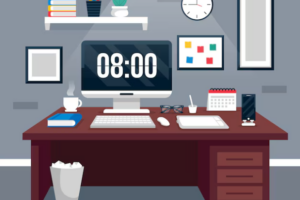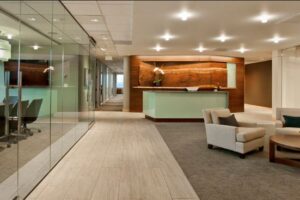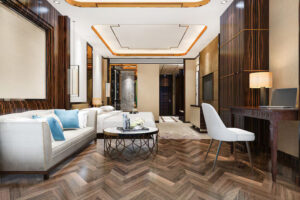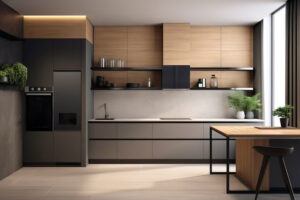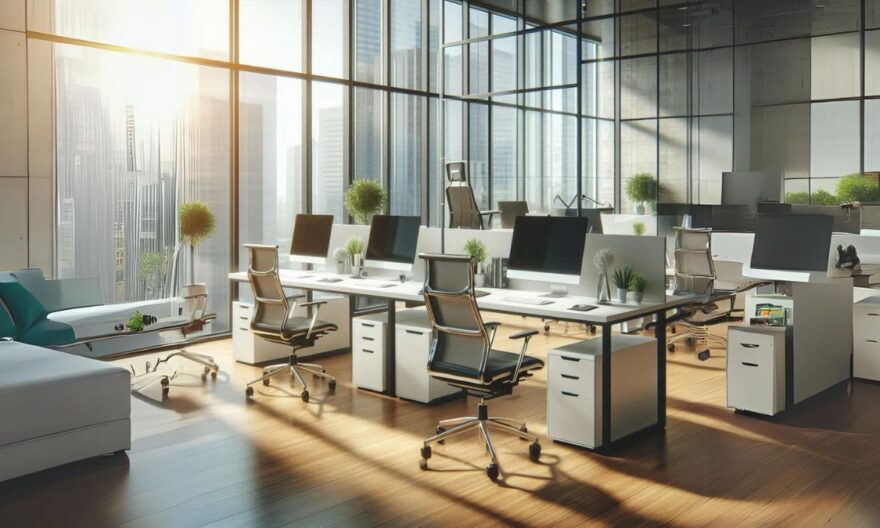
The corporate spaces have changed over the years, especially in Singapore with the addition of many features. The result is that more and more, the need for a modern, flexible, and beautiful office has been felt. With companies on the rise, looking to spur creativity through the work environment, foster collaboration, and enhance productivity, corporate interior design remains at the core of every business individual’s interest.
Award-winning Singapore architects have consistently reinvented corporate interiors to ensure that these spaces are more than functional; they incorporate new trends. The guide looks through contemporary trends in corporate interior design in Singapore and offers valuable insight into ways through which businesses can uplift their workspaces.
1. Biophilic Design: Bringing Nature Indoors
Biophilic design is among the major trends in corporate interior design. This is incorporating elements of nature into the workplace and making a place serene to be in. Be it through greenery, water features, or natural light, biophilic design links with nature and enhances mood and productivity.
- Natural Lighting: Increasingly, offices are designed to maximise the use of natural light in order to decrease dependence on artificial lighting. And to make the workspace more energy-efficient.
- Green Walls and Plants: Plants are increasingly used in office interior design to purify air and refresh the atmosphere, improving the welfare of employees.
- Natural Materials: Wood, stone, and other materials of organic origin give offices a more grounded and tranquil feel.
2. Open Floor Plans: Encouraging Collaboration
Offices in Singapore apply open floor plans in the context of interior design. This helps in increasing collaboration and effective communication among staff. The removal of these physical barriers will ensure that employees are likely to interact with one another and develop teamwork.
- Flexible Workspaces: Open floor plans mostly incorporate multipurpose spaces that could either be used as meeting or brainstorming spaces or simply as relaxation areas. These flexible spaces break the monotony associated with traditional office designs.
- Hot Desking: Many companies have opted for hot desking, where no employee has a fixed workstation. There are several advantages to this system because it encourages movement, collaboration, and the efficient use of office space.
3. Sustainable Design: Corporate Responsibility
Sustainability is one of the primary considerations of corporate interior design in Singapore. Corporations look for ways through which they can contribute less to environmental degradation.
- Low-Carbon Footprint with Eco-Friendly Materials: More often than not, this moves towards the use of sustainable materials characterised by a low carbon footprint. Recycled and upcycled materials are finding their way into office furniture and fittings.
- Energy Efficiency: Design factors that help reduce energy use through the provision of energy-efficient lighting and climate control systems are also factored into such designs.
- Sustainable Architecture: Award winning architects in Singapore have turned their attention to developing buildings which not only go easy on the environment but also turn out to be rather pleasing to the eyes, thus promoting corporate sustainability.
4. Technologically Integrated Workspaces: The Future is Here
Technology in corporate interior design has emerged to be an important aspect. Now, offices must be installed with new technologies so that the demands of the employees of today can be met.
- Smart Offices: From automated lighting to voice-controlled devices, smart technology has changed the way office spaces are utilised today. Through apps and smart devices, employees are able to control different areas of working spaces from lighting and temperature.
- Video Conferencing Solutions: With everyone working from home, video conferencing technology became an overnight sensation. Offices are now being designed with state-of-the-art video-conferencing rooms for seamless communication among off-site teams.
- Wireless Charging Stations: As more and more devices go wireless, new offices incorporate charging stations that help employees juice up their devices without having to worry about those cumbersome cables.
5. Wellness-Centric Workspaces: First Comes Employee Well-being
Corporate interior design tends to prioritize employee health and wellness. It incorporates elements of ergonomic furniture, relaxation spaces, and physical and mental wellness facilities.
- Ergonomic Furniture: Comfortable, adjustable furniture for employees would help in the maintenance of their comfort level and thus avoid strains and injuries. In that direction, it enhances productivity at work. Sit-stand desks, ergonomic chairs, and adjustable monitors are some of the important features of wellness-oriented design.
- Recharging Zones: Break rooms or recharge zones are becoming more popular and offer a serene and calm atmosphere as an escape from the daily busy schedule. They help lower stress levels for employees and increase productivity.
- Wellness Zones: Some modern corporate interiors have an inbuilt gym, while others promote fitness by offering standing desks to remain on one’s feet throughout the day and conducting walking meetings.
6. Minimalist Aesthetics: Art of Keeping it Simple
Lean design has become a massive trend lately in corporate interior design. Clean and distraction-free workspaces can therefore help in creating focus more effectively.
- Neutral Colour Schemes: An increasing number of offices are designed using shades like white, grey, and beige. This results in a cool atmosphere and feel of openness.
- Simple and Clean Lines: Clean lines and simple furniture help clear the space of any clutter—be it visual or actual—in a manner that gives it a sleek, modern look.
- Less is more: This design philosophy works towards not only reducing the elements in terms of quantity but also a higher quality. Ultimately, the real focus is on the bare minimum, while at the same time figuring out elements that significantly help in improving productivity.
Conclusion
Creating a modern corporate interior in Singapore is much more than merely setting up a functional workspace. Indeed, it lies in the blend of aesthetics with practicality to enhance employee well-being. Moreover, award-winning architects in Singapore lead the way in innovation through their corporate interior designing service solutions. Consequently, this meets the demands of their modern workplace. Furthermore, these trends will make big differences in the future of all corporate environments. From biophilic design to technologically enhanced workspaces. Ultimately, sustainability, wellness, and flexibility in offices set the workplace at the leading edge of dynamism, inspiration, and productivity.
Related: Concept to Reality: Design a Theme-Based Restaurant Interior

